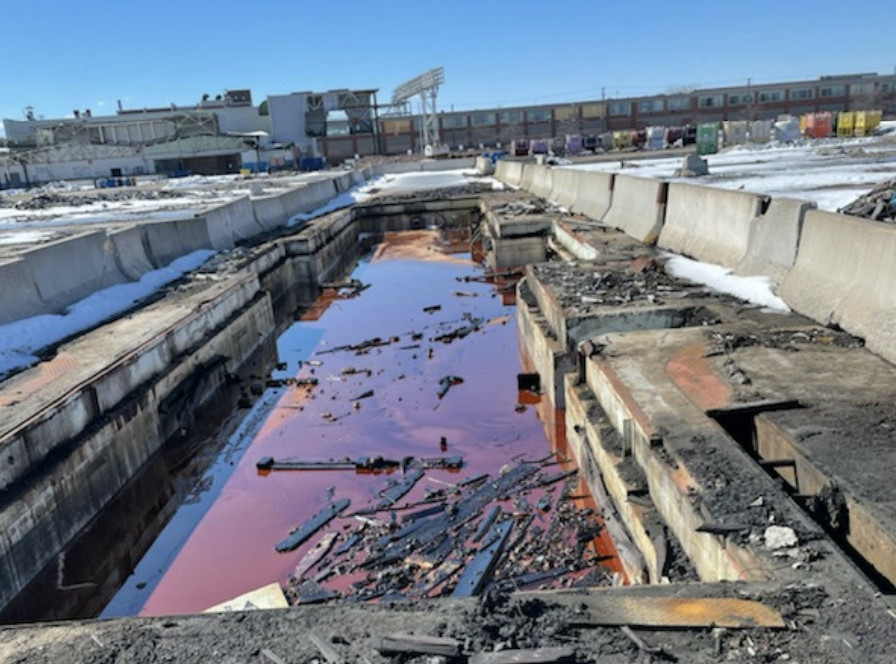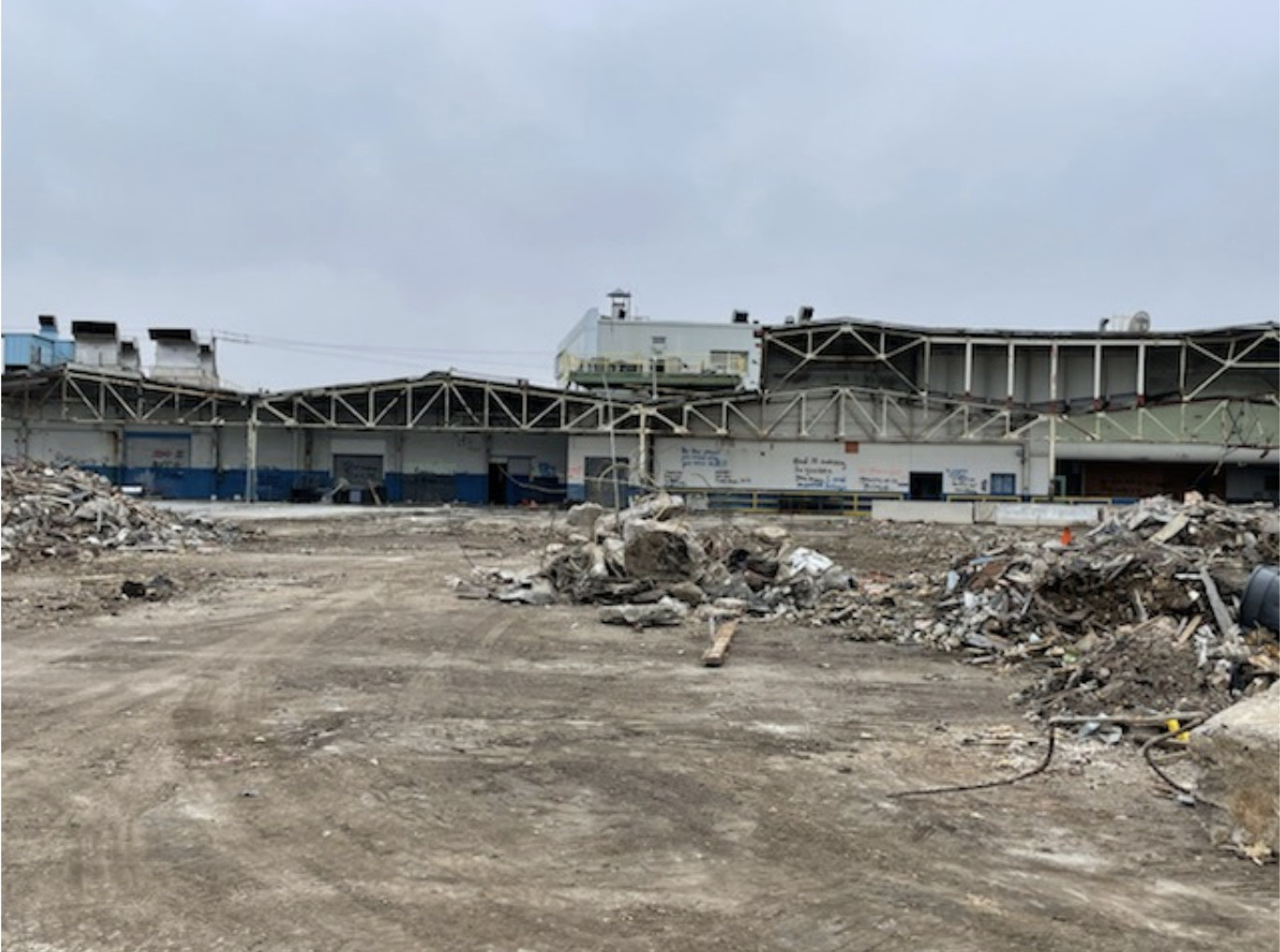
St. Catharines, GM lose two-year battle to keep details about environmental contamination on site slated for development secret
The City of St. Catharines has been ordered to release all documentation detailing the toxic substances beneath the former General Motors site on Ontario Street where developers have planned to build residential units without disclosing the potential health risks to future residents.
On November 12th, an adjudicator from the Information and Privacy Commissioner (IPC) of Ontario ordered the City to disclose the records in full, after it fought for two years to keep the documents from the public.
The environmental reports, which the City must release next month, will detail not only the toxins present on the site, but also their concentration and locations. Residents, The Pointer and other concerned parties have been trying to get details of the contamination for more than two years, as concerns have mounted over plans to build homes on the site of a large-scale operation that used heavy industrial, toxic chemicals for decades.
The City has known for more than two years that the site contains dangerous chemicals that pose severe health risks. In late 2022 provincial environment ministry officials told the current council that cursory testing showed the presence of PCBs around the site and that the dangerous, cancer-causing substance was leaking from the property. Earlier testing had also shown the presence of PCBs and other toxic chemicals, with little action under former mayor Walter Sendzik who had worked secretly behind the scenes to get the site developed for residential use and was linked to the controversial businessman—they were photographed together on a boat sport fishing in the Caribbean—who originally tried to get the project off the ground.
The environment ministry had no records at the time of efforts by the City or developers to remove contaminants and mitigate the potential risks to human health. The ministry confirmed to The Pointer in December 2022 that no Record of Site Condition, which shows what toxic chemicals are present on a brownfield property and the remediation work required to clean it, had been submitted to the Province by the property owner who was seeking to develop the lands where dangerous chemicals were present.
At the core of the matter are the Phase I and II Environmental Site Assessments (ESAs) for the entire 55-acre GM site.
The Pointer attempted to gain access to this information through a Freedom of Information (FOI) request submitted to the City of St. Catharines in May, 2022. In line with the Municipal Freedom of Information and Protection of Privacy Act (MFIPPA), the City notified General Motors, the previous owner, of the request.
GM, which purchased the property in 1929 after it had housed another industrial operation since 1901, opposed the release of the reports, arguing that the City would be breaching confidentiality should they be released, as the reports are the property of GM. The automaker also argued that releasing the information would cause reputational harm. The City chose to support GM’s argument and refused to release the information, arguing in part that, “It would be difficult for the lay reader to use this sort of data in context,” and that “most non-experts would need to rely on web searches extensively to try to understand acronyms, test results, regulations”.
St. Catharines officials—after Sendzik and senior staff had pushed the development project behind closed doors—claimed residents do not need to know the information; may become unduly alarmed by it; can not understand it and can not be relied upon to talk about the issues in context and, therefore, staff are justified to withhold the information.
GM emphasized that it provided the Environmental Site Assessments (ESAs) confidentially to the property owner who purchased the land, Bayshore Groups, during the 2014 property sale. Bayshore subsequently used the reports as supporting documentation in a grant application submitted to the City for the residential development project. According to GM, it did not authorize Bayshore to share the reports with the City and this lack of authorization prevents the municipality from sharing the documents with the public.
A Phase I ESA is preliminary in nature. It involves an environmental expert conducting visual inspections of the site, reviewing historical records and interviewing employees. The goal is to identify potential environmental concerns and determine if further investigation is warranted. If the Phase I assessment identifies areas of concern, a Phase II ESA is conducted to gather more detailed data.
The Phase II ESA is intrusive and exploratory in nature. It involves collecting samples of soil, cement, building materials and groundwater to assess for contamination. Core sampling is performed to determine the vertical and horizontal extent of subsurface contaminants and to define their concentration levels. A Phase II ESA can identify potential risks to human and environmental health, evaluate possible exposure routes (e.g., nearby water bodies), and inform risk mitigation strategies. Contaminants leaking from the site has been a known issue in St. Catharines.
In his 15-page order to release the documents, Adjudicator Alec Fadel systematically reviewed and addressed all objections raised by the city and GM regarding the disclosure, while listing numerous similar cases where ESAs were ordered to be made public. He concluded that none of the arguments made by the City or GM were persuasive or substantiated.
Throughout the two-and-a-half-year process the City consistently sided with GM on the issues, seeking to protect the company from reputational harm that might “prejudice its competitive position in the marketplace”. The City expressed its opinion that citizens may quote the report out of context "for the sake of creating controversy" and that it would be difficult for citizens to understand “acronyms, test results, regulations, and safe exposure levels”. The City also argued that GM continues to be a significant partner and employer in St. Catharines and therefore the continued public concern surrounding these properties has a “more than hypothetical” potential to harm GM.
Residents said some of the City’s elected officials and senior staff seemed to be prioritizing the corporation's reputation while showing little to no regard for the citizens' right to be informed, or any real understanding of the potential risk to human and environmental health.
Glenn Brooks, who lives adjacent to the former GM site with his partner Susan Rosebrugh, was diagnosed with breast cancer in 2020. After a series of tests, his oncology team attributed his illness to environmental causes. While they did not directly link it to living next to the GM site, Brooks expresses that he has no doubt about the connection. He recounts eating vegetables from his garden, which, as he notes, “literally shared the soil with the GM site.”
When informed about the impending release of the documents, Brooks remarked: “It’s nice to see that the City is finally being made to release these assessments. It’s something they should have done from the start, if for no other reason than to inform citizens living adjacent to the site, what hazards they face. It’s unimaginable that they would want to bury these reports.”

The reports ordered to be released by the Information and Privacy Commissioner will shed new light on the levels of contamination on the former GM site slated for residential development.
(MTE Consultants)
Don Sawyer, a founding member of the Coalition for a Better St. Catharines—a citizens group advocating for transparency and the cleanup of the former GM site—shared his reaction to the news that the information would be made public. Speaking to The Pointer, Sawyer stated: “It is both gratifying and appalling to learn that a Freedom of Information (FOI) request that was filed with the City two-and-a-half-years ago has finally been honoured, and, at long last, the people of St. Catharines will know the extent of pollution on the old GM site.”
Sawyer added: "To me, just as important as what the actual documents will reveal about the various toxins and their concentrations on the old GM site, is the fact that the City repeatedly refused to share with the community critical information that could affect our health and wellbeing."
GM ceased operations on the 55-acre site in the core of the city in 2010 and four years later announced the sale of the property to Bayshore Groups. The Bayshore plans, celebrated with great fanfare by former mayor Sendzik, promised a $250 million mixed-use development on the land. It was welcome news to a community that had grown tired of the abandoned industrial factory which had become a deteriorating eyesore in the heart of the community.
But little action was taken to address the presence of dangerous compounds used on the industrial site for more than a century.
The development plan moved forward anyway, promising retirement residences, luxury apartments, lofts, commercial businesses and a technical trade school. Demolition was scheduled to begin almost immediately after the sale with clearing and cleaning of the area taking 18 months, and construction on the new site set to start by 2016.
The plan never materialized.
A series of setbacks and controversies unfolded; the original developer racked up $140,000 in fines for dozens of provincial offence charges for fire and building code violations as it failed to clean up the site and then, despite Sendzik’s secretive efforts to help the developer, he walked away from the project. The former and current property owners did not conduct a full environmental assessment, and as concerns mounted about the risks posed by the presence of toxic heavy metals, PCBs and other carcinogens, critical details around the presence of dangerous chemicals were kept hidden from the public.
In order to ensure compliance with his order to the City the Information and Privacy Commissioner of Ontario adjudicator reserved the right to require the municipality to send him a copy of the environmental assessments that it discloses to the public. The adjudicator already possesses a copy of all the documents and is therefore well positioned to ensure St. Catharines officials disclose everything as has been ordered.
The City was ordered to release the documents between December 13 and 17.
As stated by Glenn Brooks: “I guess we’ll see in December what they knew and what they kept from us.”
Email: [email protected]
At a time when vital public information is needed by everyone, The Pointer has taken down our paywall on all stories to ensure every resident of Brampton, Mississauga and Niagara has access to the facts. For those who are able, we encourage you to consider a subscription. This will help us report on important public interest issues the community needs to know about now more than ever. You can register for a 30-day free trial HERE. Thereafter, The Pointer will charge $10 a month and you can cancel any time right on the website. Thank you
Submit a correction about this story


